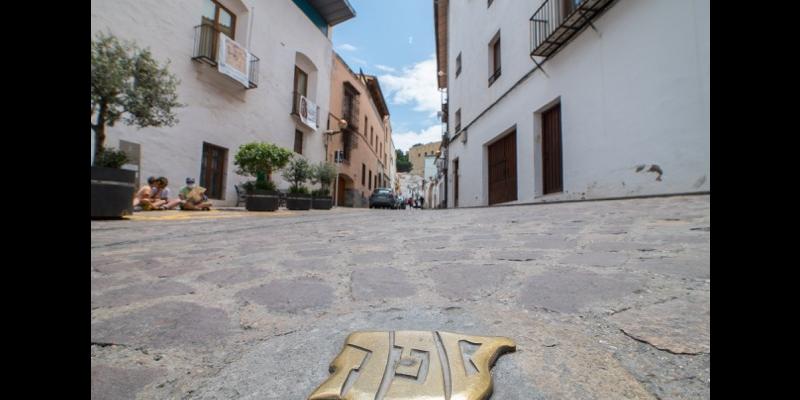The Routes of Sefarad [Caminos de Sefarad]is an interactive website/exhibition detailing spaces, places, and objects that document Jewish life in Spain from approximately 914 through the expulsion of the Jews from Spain in 1492 in 24 different Spanish cities created by the Network of Jewish Quarters in Spain [Red de Juderías de España], a non-profit public association created with the goal of protecting urban, architectural, historical, artistic and cultural Sephardic heritage in Spain. The cities that form the Network spent more than 20 years rehabilitating houses, streets, palaces and other buildings to recover knowledge from the lives of Jewish families that lived there, history that has been hidden for more than five hundred years. These cities have worked to enhance the value of their tangible and intangible heritage, reinforcing the cities' conservation, signage and recovery. Included in the website is an interactive timeline, an interactive map (with Google Maps and Street View enabled), and images from various manuscripts, archives, and objects to further highlight various events.
(Description adapted from information on project website)
Subject Period (epoch)
Subject Continent(s)
Subject Country(ies)
Topic(s)
Subject Language(s)
Project Type(s)
Project Language(s)
Project Media
Project Access
Project Status
Project Creator Continent(s)
Project Creator Country(ies)
Project Creator City(ies)


The Routes of Sefarad [Caminos de Sefarad]is an interactive website/exhibition detailing spaces, places, and objects that document Jewish life in Spain from approximately 914 through the expulsion of the Jews from Spain in 1492 in 24 different Spanish cities created by the Network of Jewish Quarters in Spain [Red de Juderías de España], a non-profit public association created with the goal of protecting urban, architectural, historical, artistic and cultural Sephardic heritage in Spain. The cities that form the Network spent more than 20 years rehabilitating houses, streets, palaces and other buildings to recover knowledge from the lives of Jewish families that lived there, history that has been hidden for more than five hundred years. These cities have worked to enhance the value of their tangible and intangible heritage, reinforcing the cities' conservation, signage and recovery. Included in the website is an interactive timeline, an interactive map (with Google Maps and Street View enabled), and images from various manuscripts, archives, and objects to further highlight various events.
(Description adapted from information on project website)
